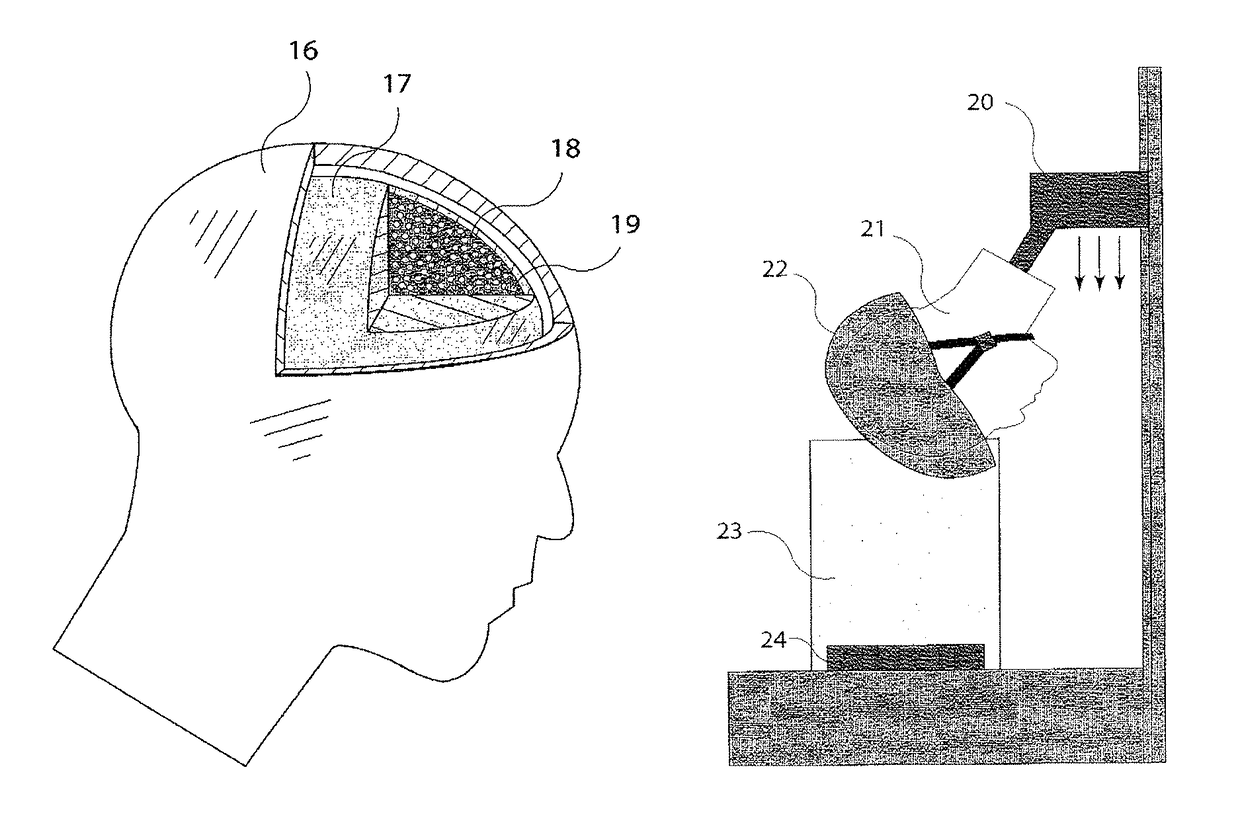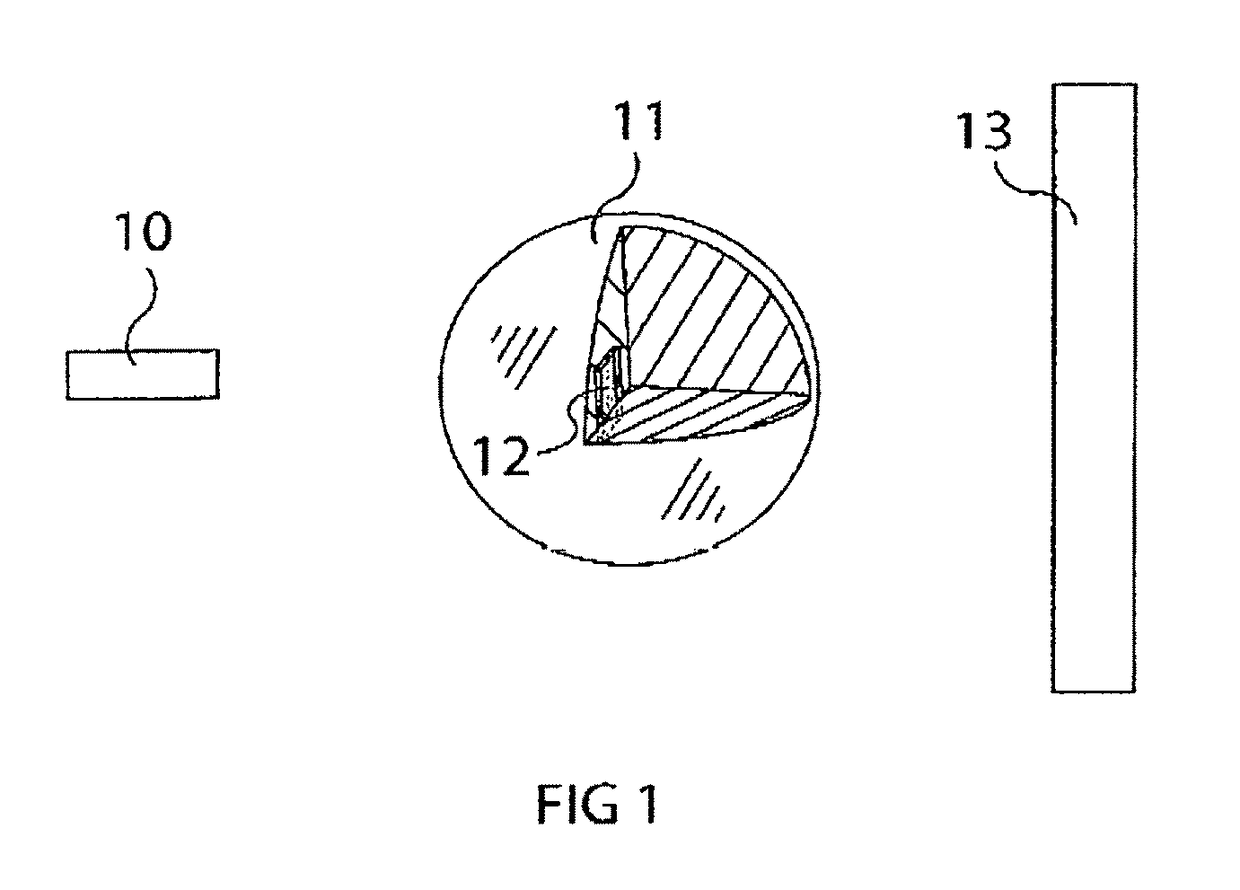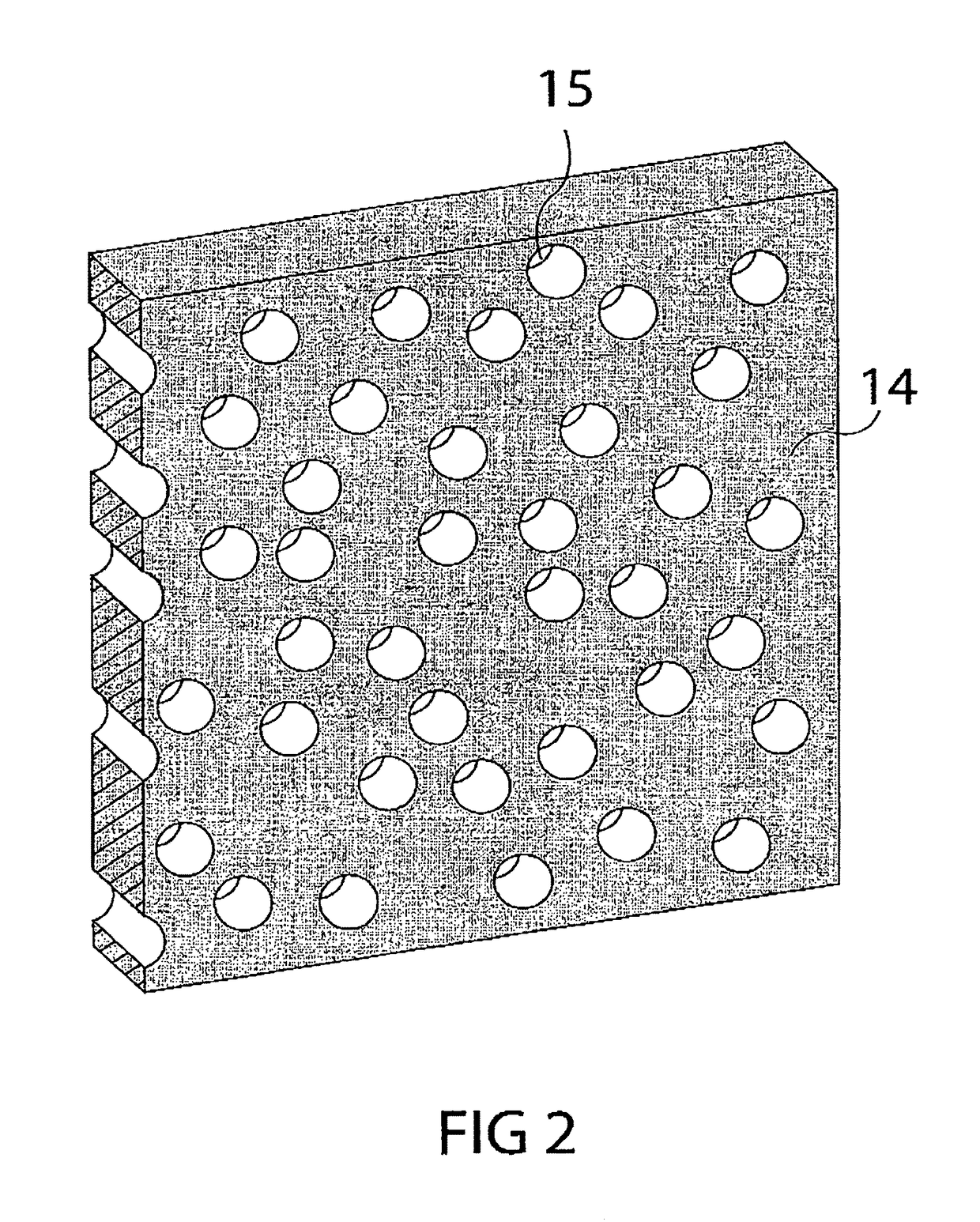Diagnostic for in situ deformation and strain measurements applicable to traumatic internal injury investigation and prevention
a traumatic internal injury and in situ deformation technology, applied in the field of in situ deformation and strain measurement applicable to traumatic internal injury investigation and prevention, can solve the problems of limited testing and certification methods related to protective equipment designed to protect against internal traumatic injuries, particularly head injuries, and achieve the effects of improving the reliability of injury outcomes prediction, preventing tissue deformation, and improving certification standards
- Summary
- Abstract
- Description
- Claims
- Application Information
AI Technical Summary
Benefits of technology
Problems solved by technology
Method used
Image
Examples
first embodiment
—FIGS. (1-3)
[0060]In its first embodiment, the gage 12 is introduced into an Internal plane of the test material 11 (e.g., anthropomorphic soft-tissue simulating headform) that is to be loaded with any type of force and its deformation is investigated (FIG. 1) using radiographic videography techniques (e.g., x-ray videography or fluoroscopy). In its first embodiment, the gage consists of a contrast agent that is mixed into a substrate material 14 at a considerably fine scale (e.g., as a powder) with a volume fraction of at least 5% contrast agent. The substrate material could be any polymeric, elastomeric or other material that can be prepared as it is being mixed with the contrast agent to allow casting of the gage with a series of holes 15 as shown in FIG. 2.
[0061]The holes 15 in the gage, the size of which will depend on the magnification and resolution of the imaging configuration, must be large enough to encompass at least 4 pixels on the digital receiver, with an equivalent av...
PUM
| Property | Measurement | Unit |
|---|---|---|
| volume fraction | aaaaa | aaaaa |
| thickness | aaaaa | aaaaa |
| peak voltage | aaaaa | aaaaa |
Abstract
Description
Claims
Application Information
 Login to View More
Login to View More - R&D
- Intellectual Property
- Life Sciences
- Materials
- Tech Scout
- Unparalleled Data Quality
- Higher Quality Content
- 60% Fewer Hallucinations
Browse by: Latest US Patents, China's latest patents, Technical Efficacy Thesaurus, Application Domain, Technology Topic, Popular Technical Reports.
© 2025 PatSnap. All rights reserved.Legal|Privacy policy|Modern Slavery Act Transparency Statement|Sitemap|About US| Contact US: help@patsnap.com



